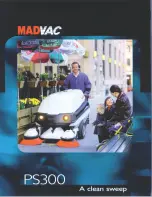
9
BEFORE START OF OPERATION
1. Inspection and Refill of Engine Oil
(1) Perform the following procedure when the engine is cool.
Assure engine is on a flat horizontal surface as shown in Figure 1.
• Inspection: Remove the oil cap. Wipe clean the oil level indicator. Reinstall the oil cap (Figure 2) and remove. Confirm if the oil is
between the lower or upper limit of the oil indicator.
• Refill:
After inspection if the oil is below the lower limit add oil through the same opening that the oil cap was removed. See Fig-
ure 4 on how to orient the engine to refill the oil.
(2) You may need to refill oil approximately every 10 hours of use (every 10 refuellings).
(3) If the oil changes in color or mixes with dirt, replace the oil. (For the interval and method of replacement, refer to P. 14)
Recommended oil:
SAE 10W-30 oil of API Classification, Class SF or higher (4-stroke engine for automobile)
Oil volume:
Approx. 0.08 L (2.7 fl.oz)
Inspection method of engine oil
NOTE
• If the engine is not positioned as in Figure 1 on a horizontal surface, an inaccurate indication of oil level may occur.
• If the oil is filled above the limit, oil may be contaminated or may catch fire with white smoke.
Replacement of Oil “Oil Gauge”
• Remove dust or dirt near the oil refill port, and detach the oil gauge.
• Keep the detached oil gauge free of sand or dust. Otherwise, any sand or dust adhering to the oil gauge may cause irregular oil circulation or
wear on the engine parts, which will result in troubles.
• As an example to keep the oil gauge clean, it is recommended to insert the oil gauge on its knob side into the engine cover.
After refilling oil
• Wipe with a rag any spilled oil.
Figure 1
Figure 2
Lower limit
Upper limit
Figure 3
Upper limit
Lower limit
Oil level indicator
Figure 4
Figure 5
Shelf
Figure 6
Shelf










































